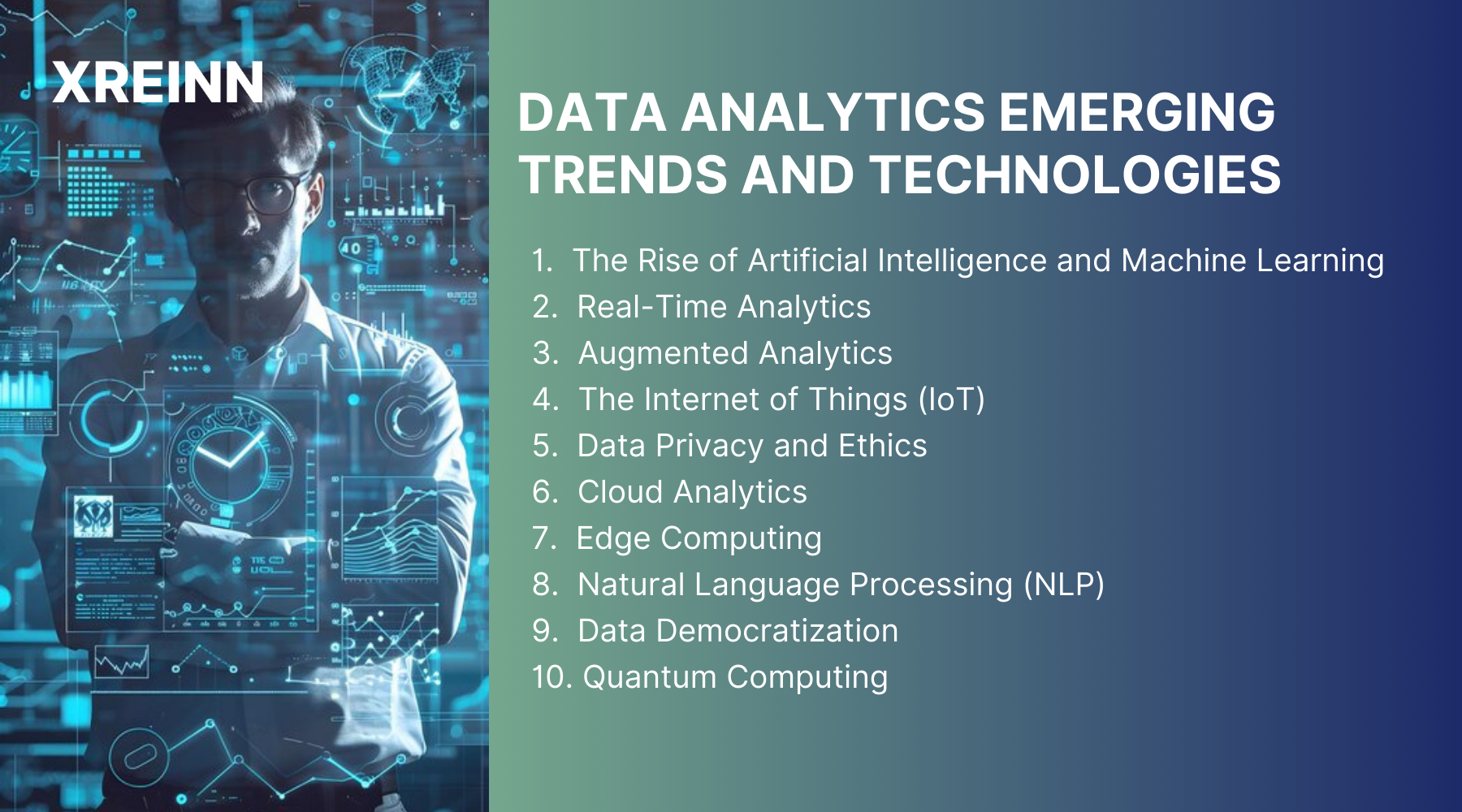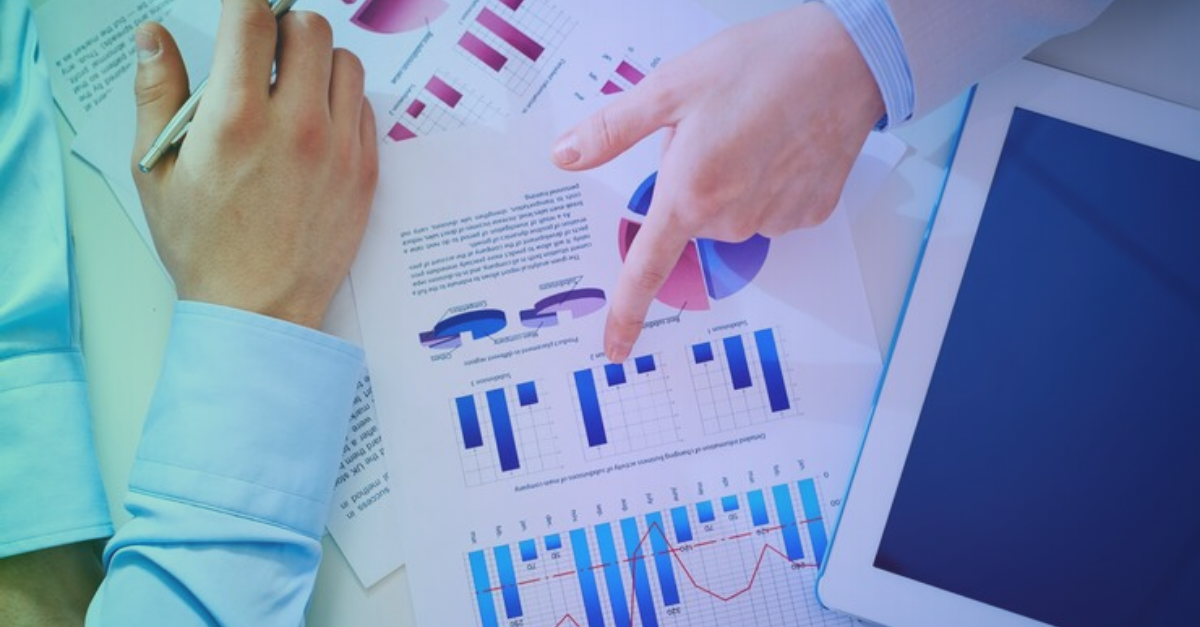Data Analytics
Cloud-Based Data Analytics: Top Benefits and Practical Implementation Strategies
Jul 10, 2024
As we progress deeper into the 21st century, the landscape of data analyticscontinues to evolve at an extraordinary pace. What once was a field dominated by basic statistical analysis has transformed into a complex ecosystem of advanced technologies and methodologies. This evolution is driven by the ever-growing volume of data, advancements in computing power, and the increasing need for businesses to gain deeper insights into their operations and customer behaviors.
Let’s explore the emerging trends and technologies that are shaping the future of data analytics.
Data Analytics Emerging Trends and Technologies
Here are some key trends to understand:

1. The Rise of Artificial Intelligence and Machine Learning
Artificial Intelligence (AI) and Machine Learning (ML) have been buzzwords for a while now, but their impact on data analytics is only set to grow. AI and ML algorithms can process vast amounts of data far more quickly and accurately than traditional methods. They uncover patterns and insights that would be impossible for humans to detect.
Example
Consider a retail company that wants to predict customer behavior. By using ML algorithms, they can analyze past purchase data, social media activity, and even weather patterns to forecast demand for certain products. This allows them to optimize inventory levels, reduce waste, and improve customer satisfaction.
2. Real-Time Analytics
In the fast-paced business environment, the ability to make decisions based on real-time data is a real win. Real-time analytics enables organizations to monitor events as they happen, providing immediate insights and allowing for swift, informed decisions.
Example
Financial institutions use real-time analytics to detect fraudulent transactions. By analyzing transaction data as it occurs, they can identify suspicious activity and take action to prevent fraud almost instantaneously.
3. Augmented Analytics
Augmented analytics uses AI and ML to automate data preparation, insight generation, and even the explanation of those insights. This trend is making advanced analytics accessible to a broader audience, including those without a deep technical background.
Example
A marketing team can use augmented analytics tools to analyze campaign performance. These tools can automatically highlight key metrics, suggest improvements, and predict future trends, empowering marketers to make data-driven decisions without needing a data scientist.
4. The Internet of Things (IoT)
The rapid increase in IoT devices is generating massive amounts of data from sensors, cameras, and other connected devices. Analyzing this data can provide valuable insights into everything from equipment performance to consumer behavior.
Example
In the manufacturing sector, IoT sensors can monitor machinery in real time, predicting maintenance needs before a breakdown occurs. This predictive maintenance reduces downtime and saves costs.
5. Data Privacy and Ethics
As data analytics capabilities grow, so too do concerns about privacy and ethics. Future trends in data analytics will likely involve stricter regulations and more sophisticated techniques for ensuring data privacy and security.
Example
Companies will need to implement robust data governance frameworks to ensure they comply with regulations like GDPR. This might include anonymizing data, obtaining explicit consent from users, and regularly auditing data practices.
6. Cloud Analytics
The shift to cloud computing is transforming data analytics by providing scalable, flexible, and cost-effective solutions for storing and processing data. Cloud analytics platforms offer powerful tools for data integration, visualization, and analysis, making it easier for organizations to use their data.
Example
A startup can use cloud analytics to access advanced analytics tools without the need for significant advanced investment in hardware and software. This allows them to compete with larger companies and scale their operations as they grow.
7. Edge Computing
While cloud computing is revolutionizing data analytics, edge computing is emerging as a complementary trend. By processing data closer to its source, edge computing reduces delay and data transmission requirements, enabling faster insights and actions.
Example
Autonomous vehicles rely on edge computing to process data from sensors and cameras in real-time. This allows them to make split-second decisions, such as applying the brakes to avoid an obstacle.
8. Natural Language Processing (NLP)
NLP is improving the way we interact with data. By enabling computers to understand and respond to human language, NLP is making data analytics more intuitive and user-friendly.
Example
Business intelligence tools with NLP capabilities allow users to ask questions in plain language, such as "What were our sales last quarter?" The system then interprets the question and generates the appropriate report, making data analysis accessible to non-technical users.
9. Data Democratization
Data democratization aims to make data accessible to all employees within an organization, regardless of their technical expertise. This trend is supported by user-friendly analytics tools and a culture that encourages data-driven decision-making.
Example
A company might implement a self-service analytics platform that allows employees from various departments to access and analyze data relevant to their roles. This empowers everyone, from marketing to HR, to make informed decisions based on data insights.
10. Quantum Computing
Although still in its early stages, quantum computing holds immense potential for data analytics. Quantum computers can process complex calculations at remarkable speeds, opening up new possibilities for analyzing massive datasets.
Example
In pharmaceuticals, quantum computing could significantly speed up the drug discovery process. By analyzing vast amounts of molecular data, quantum computers can identify potential drug candidates much faster than traditional methods.
Conclusion
The future of data analytics is promising, with numerous emerging trends and technologies set to transform the field. As AI and ML continue to evolve, real-time and augmented analytics become more prevalent, and edge computing and quantum computing open up new possibilities, businesses will be better equipped to utilize the power of their data fully.
However, with these advancements come challenges, particularly around data privacy and security. Organizations can thrive in the data-driven future by staying informed about these trends and adopting best practices.

Data Analytics
Jun 27, 2024Master key concepts in data analytics with practical tips to enhance decision-making and achieve success in your projects and professional growth

Data Analytics
Jul 01, 2024Learn the essential stages of the data analytics workflow to turn your data into valuable business insights and drive growth.

